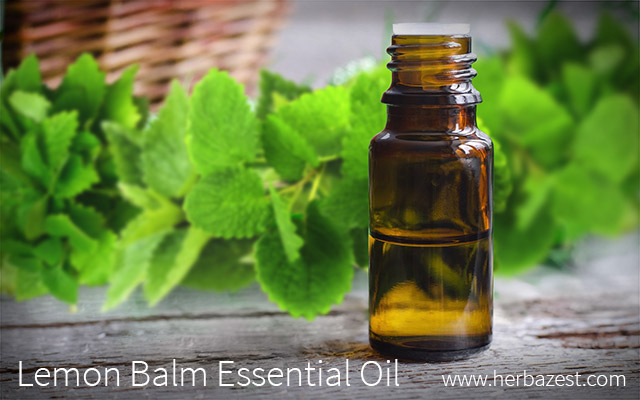Highly regarded for its medicinal benefits, the essential oil of lemon balm is used for aromatherapy and for cosmetic purposes.
It's important to understand the difference between an essential oil and an oil. While the first is a product of steam distillation, the second is obtained by soaking or softly heating herbs in an oil base. However, both of these products are recommended for external use only, since ingesting them may be toxic.
How to Make Lemon Balm Essential Oil
The steam distillation of lemon balm is usually done at the industrial level due to the amount of leaves and flowers needed to obtain the essential oil. If you manage to get the proper equipment, it can be done at home. However, the quantity of lemon balm essential oil obtained may not be significant compared to the long extraction process. One lemon balm plant will produce about 0.02% of essential oil by weight, and the essential oil yield per kilogram of lemon balm plants will be typically less than 0.5 mL (less than 0.07 fluid ounce per pound).
Equipment:
- You will need a still, consisting of a boiling flask, a reservoir flask, a still head or retort, a condenser, and a collection flask.
- A reverse osmosis filter will keep your flasks clean, and a fish tank pump will propel cold water from the bottom all the way through the still head and back, helping to keep the coils inside fresh, allowing the condensation process necessary to extract lemon balm essential oil. For distillation purposes, distilled water is the best option.
- A separating funnel will allow you to separate the natural alcohols from the essential oil of lemon balm.
- Place your distillation kit in a safe room with good ventilation to avoid any hazards, such as fires.
- An electric stove is ideal to heat the still uniformly.
Step by step process:
- Carefully, cut off the above ground portion of the lemon balm plant before it blooms.
- Discard the heavier stems and put the rest into the reservoir flask.
- The distillation temperature should be within the range of 140F (60C) for the initial temperature and 428F (220C) for the final temperature in order to preserve the individual constituents of lemon balm essential oil.
- The vapors from the boiling flask will go through the reservoir containing the herbs and then through the still head, which will transport them to the condenser, where they will be transformed back into a liquid, which at this point is an extract or hydrosol. This process may take six to eight hours, depending on the amount of herbal material you put in the reservoir flask.
- Now you will have to fill the separating funnel with the liquid of the reservoir flask. Wait until the process is completed. It will not take long. The water will remain on top, while the essential oil will completely sink to the bottom.
- At this point, you can open the tap and fill the small container with the essential oil. Be sure not to let any of the alcohols pass, since they can affect the quality of your lemon balm essential oil.
Benefits of Lemon Balm Essential Oil
The essential oil of lemon balm has relaxing effects, as well as astringent and antiviral actions. When directly applied, it is very effective in calming muscle pains and spams, as well as killing bacteria. Likewise, it is highly regarded in aromatherapy treatments, since its lemony-minty scent reportedly promotes relaxation and induces sleep.
Lemon balm essential oil is very useful and can serve as an alternative treatment to the common conditions mentioned above, which makes it a good option for any herbal medicine cabinet.
Sources
- Government of South Africa, Department of Agriculture, Forestry and Fisheries - Essential Oil Crops. Production guidelines for lemon balm
- Herb Society of America, Lemon Balm: An Herb Society of America Guide
- National Association for Holistic Aromatherapy, How Are Essential Oils Extracted?




